A Complete Guide to Device Authentication Methods
Explore how device authentication goes beyond passwords to verify not just users, but the devices they use. From biometrics and tokens to machine-to-machine (M2M) authorization, learn the methods that help secure modern digital ecosystems against spoofing, theft, and misuse.

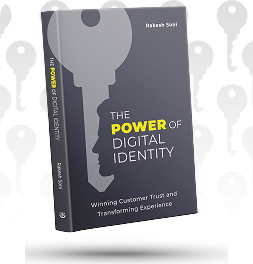
Learn How to Master Digital Trust
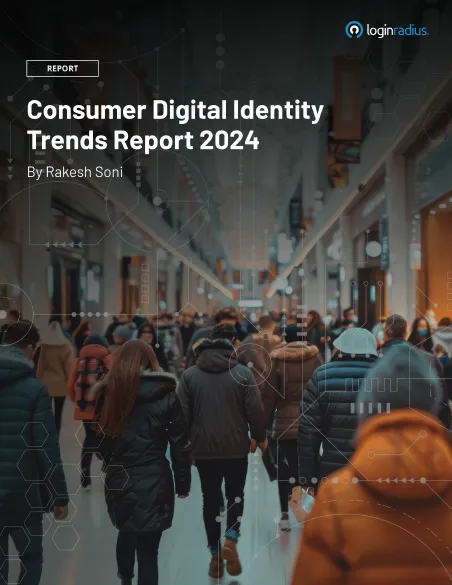
The State of Consumer Digital ID 2024

Top CIAM Platform 2024
Ever had your phone ask, “Is this really you?” That’s not just user authentication—it’s device authentication at work.
In today’s hyper-connected world, devices aren’t just accessories—they’re central to how we access data, services, and systems. From a customer unlocking their banking app with a fingerprint to an employee accessing a corporate VPN from their work laptop, verifying not just who is logging in, but what device they’re using, has become a cornerstone of modern digital security.
Whether you're managing millions of mobile users, protecting remote teams, or operating in regulated industries like healthcare or finance, device authentication ensures that only recognized and approved devices can interact with your applications, APIs, and networks. This prevents attackers from gaining access, even if they’ve stolen the right credentials.
So, how does device authentication work? What methods are available? And how can you use them effectively across your organization? Let’s break it down.
What is Device Authentication?
Device authentication is the process of verifying that a specific device, such as a smartphone, tablet, desktop, or IoT sensor, is authorized to access a digital resource, network, or service.
Unlike traditional authentication, which focuses solely on verifying the user’s identity, device authentication adds another layer: it confirms that the hardware being used is trusted, secure, and recognized. This two-pronged approach significantly strengthens access control and helps prevent breaches from compromised or unauthorized devices.
Device authentication extends the foundation of authentication—the process of verifying a user’s identity - by also ensuring that the device being used meets defined trust criteria.
This is especially crucial in environments where credentials alone aren’t enough—such as in finance, healthcare, or distributed remote teams. Let’s understand this in detail.
Why is Device Authentication Important—Beyond Device-to-Device?
Device-to-device authentication, often referred to as machine-to-machine (M2M) communication, enables systems, applications, and connected devices to securely identify and interact with each other—without human involvement. It’s essential for IoT ecosystems, backend microservices, and automated workflows where secure, autonomous communication is required.
However, device authentication goes far beyond M2M scenarios.
In most real-world applications, devices are used by people—employees, customers, partners—who access apps, networks, and APIs from various endpoints. Here, device authentication plays an even more critical role: it ensures that access is granted not only to the right user but also from a recognized, trusted device.
This dual-layer validation strengthens security, reduces fraud risk, and helps maintain compliance across regulated industries.
Here are a few key examples that will help you better understand:
B2C Use cases:
-
Mobile Banking and Financial Apps : Even if an attacker knows a user’s login credentials, they can’t initiate a transaction without using the verified mobile device. This prevents fraud at the device level.
-
Healthcare Portals : Sensitive patient records can only be accessed from registered devices used by authorized practitioners, reducing the chance of HIPAA violations or data leaks.
-
E-commerce and Retail : Device fingerprinting and trust scoring prevent account takeovers by identifying suspicious devices attempting to log in, even if the username and password are correct.
B2B Use cases:
-
Remote Work Security : When employees work from personal or unmanaged devices, the risk of unauthorized access increases. Device authentication ensures only compliant, trusted laptops can connect to corporate systems.
-
API Access Management : Ensures only backend services or apps running on validated infrastructure can interact with your APIs, reducing the risk of exploitation from compromised clients.
These use cases highlight that device authentication is essential not just for device-to-device communication, but also for human-to-system interactions, which are far more common in everyday digital experiences.
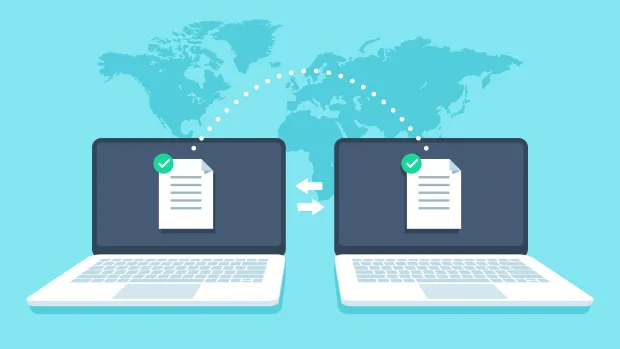
How is Device Authentication Done?
Let’s walk through the different types of authentication that can be used to verify devices, and explore how you can integrate each into your applications.
1. Password-Based Authentication
This is the most familiar and widely used method: a user logs into a system from a device by entering a username and password. While it's simple to implement and user-friendly, it’s also inherently vulnerable—passwords can be guessed, phished, or leaked.
Despite its limitations, password-based authentication still plays a vital role, especially in systems where backward compatibility or user familiarity is important. When combined with multi-factor authentication (MFA) and device-based verification, it contributes to a layered, more secure access strategy.
To implement password-based login while aligning with modern security standards, explore LoginRadius’s password authenticationfeatures, which include advanced policy controls, encryption, and breach detection.
2. Certificate-Based Authentication
Here, the device presents a digital certificate usually X.509 , signed by a trusted Certificate Authority. This certificate proves the device's identity and is validated by the server.
This method is ideal for machine-to-machine authentication, such as in IoT ecosystems or automated service connections. It's highly secure and used widely in corporate VPNs and secure enterprise environments.
To implement certificate-based authentication, explore LoginRadius’ certificate and token authentication support for high-trust environments.
3. Token-Based Authentication
Devices first authenticate themselves using credentials or a certificate, and then receive a token (like a JWT). That token is then used for future requests, keeping the process lightweight and secure.
This method is excellent for device-based verification solutions, especially when scalability and speed are important—like in APIs and mobile apps.
To secure your APIs and sessions with token-based authentication, get started with LoginRadius’s secure access token capabilities.
4. Biometric Authentication for Mobile Devices
This involves authenticating a user to a device using physical characteristics, like fingerprints or facial recognition. Once verified, the trusted device can access protected systems or perform actions on the user’s behalf.
Biometric authentication for mobile devices is fast, intuitive, and difficult to spoof—making it ideal for financial apps, healthcare platforms, and mobile-first businesses.
To integrate biometric login into your mobile apps, try LoginRadius’s SDKs that support fingerprint and facial biometrics.
5. Multi Factor Authentication (MFA) Device Integration
MFA uses two or more verification factors—something you know (password), something you have (multi factor authentication device like a security token), or something you are (biometric).
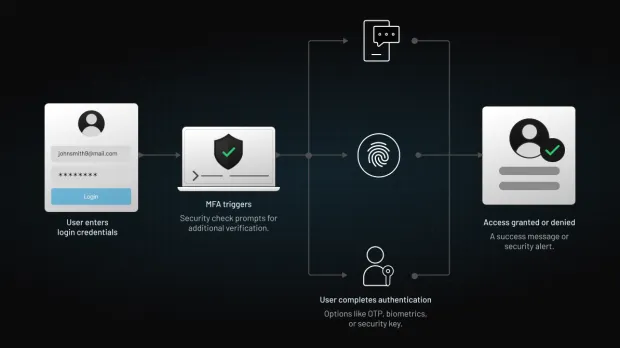
Combining these adds layers of protection, ensuring that even if one factor is compromised, the others hold firm. It’s essential in highly regulated industries like finance or healthcare.
Here’s how to implement LoginRadius MFA.
6. Device Fingerprinting
This technique creates a unique ID for each device based on characteristics like browser type, operating system, screen resolution, and installed fonts. It's a form of passive device-based verification often used in fraud prevention and e-commerce platforms.
Fingerprinting can flag unusual or suspicious device behavior even if credentials are correct.
To enhance your fraud detection strategies, integrate device fingerprinting through LoginRadius’s adaptive risk-based authentication tools.
How Does Device Fraud Happen?
Cybercriminals are clever—and they’re getting better at making fake devices look real.
Here’s how device authentication can be compromised:
-
Spoofing Device IDs: Attackers fake or clone device identifiers like MAC addresses.
-
Man-in-the-Middle (MitM) Attacks: Hackers intercept communication between devices to eavesdrop or manipulate data.
-
Credential Theft: Phishing attacks or malware capture passwords stored on devices.
-
Token reuse or theft: If authentication tokens aren’t properly secured or invalidated, attackers can hijack sessions using stolen tokens.
-
Exploiting poorly implemented fingerprinting: Weak or inconsistent device fingerprinting methods can be bypassed or manipulated to spoof legitimate devices.
These are exactly the kinds of threats device-based verification solutions are designed to defend against. With proper encryption, secure APIs, and adaptive verification through device-based verification solutions, you can stay ahead of spoofing attempts.
What Are the Benefits of Device Authentication?
Implementing strong device authentication provides a range of benefits:
-
Improved Security: Only trusted devices can access your network, apps, or APIs.
-
Regulatory Compliance: Helps meet industry standards like GDPR, CCPA ,etc.
-
Streamlined Access: Trusted devices don’t need to authenticate from scratch every time—enhancing the user experience.
-
Risk Reduction: Stops unauthorized or unknown devices at the door.
-
Enhanced Trust: Customers and users feel more secure knowing their access is protected.
When combined with user-based device access management strategies like adaptive MFA, it becomes a powerful access control technique.
What is Device Authorization?
Authentication and Authorization might sound similar but they are NOT the same. Authentication verifies the device—whereas authorization controls what that device is allowed to do once it's in.
Even if a device is trusted, it shouldn't have unrestricted access. That's where device authorization comes in—allowing granular control over permissions based on the device, user, role, or context.
How is Device Authorization Done?
Authorization determines what you can access once verified. Device authorization works in the same way for devices and typically involves:
-
Access Control Lists (ACLs): Assigning permissions to specific devices.
-
Role-Based Access Control (RBAC): Granting access based on device roles.
-
Conditional Access Policies: Applying rules like geolocation, time of day, or behavioral analysis.
This layered approach supports flexible, real-time user based device access management that adapts to evolving threats.
What is LoginRadius Machine-to-Machine Authorization (M2M)?
Imagine your applications, services, and smart devices working together—without any human involvement—securely and seamlessly. That’s the power of LoginRadius Machine-to-Machine (M2M) Authorization.
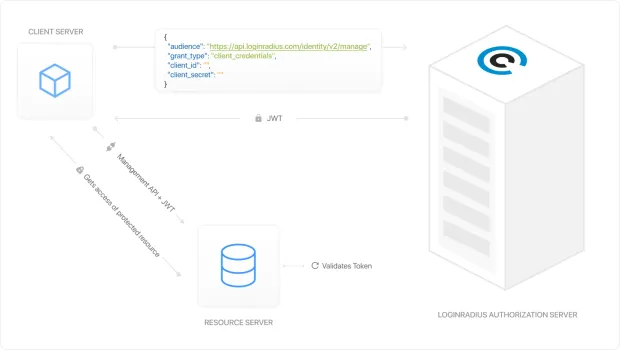
M2M authorization is essential when two or more systems need to communicate autonomously. Whether it's an IoT device pushing data to your cloud platform, a backend service calling an API, or a third-party integration syncing user information—these systems must verify each other’s identity without manual intervention.
Learn more- LoginRadius M2M Authorization Docs →
This is how LoginRadius M2M setup looks like in the admin console :
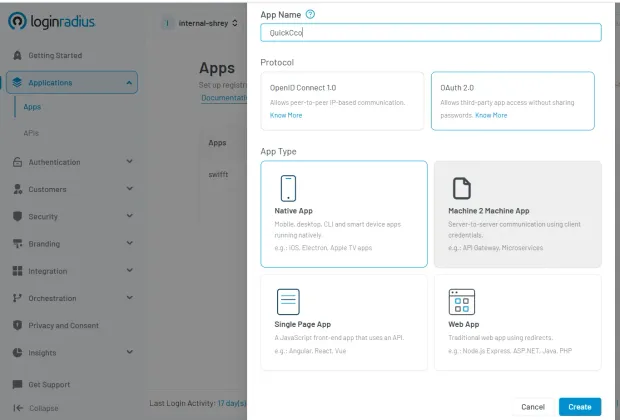
Why M2M Matters More Than Ever
In today’s architecture, where microservices, APIs, and distributed cloud apps dominate, device-to-device authentication isn’t optional—it’s fundamental.
Without proper authorization protocols in place, machines and applications can become weak points in your security posture. LoginRadius eliminates that risk with a powerful, flexible M2M framework.
Key Benefits of LoginRadius M2M:
-
Secure Token Exchange : Applications and services authenticate using client credentials to receive encrypted access tokens that define scope, expiration, and access levels.
-
Automated Trust Management : No need to manually assign or rotate credentials—LoginRadius handles key provisioning, expiration, and renewal with enterprise-grade encryption.
-
Granular Permissions : Define exactly which machines or APIs can access which resources—and when. You’re always in control.
-
Highly Scalable : Whether you’re handling 100 or 100 million requests a day, our infrastructure grows with you. Our M2M authentication platform scales without compromising security.
-
Audit and Monitoring Built-In : Gain full visibility into every device or service that connects to your ecosystem. Track usage, revoke tokens, and stay compliant with ease.
Who Should Be Using LoginRadius M2M?
-
SaaS businesses integrating third-party tools
-
IoT platforms managing thousands of connected devices
-
Enterprises running microservices and APIs
-
Developers needing secure automation between services
If you’re building a platform where systems need to talk to each other silently and securely, LoginRadius M2M gives you the tools to do it right—without friction, without gaps, and without compromise.
Ready to see how M2M can unlock smarter, faster, and safer communication between your applications?
Download this insightful datasheet and discover how LoginRadius M2M fits into your architecture:
What’s the Most Secure Method of Device Authentication?
While there’s no universal “best,” combining methods is the most secure strategy.
-
Certificate-based authentication offers strong identity verification.
-
Biometric authentication for mobile devices prevents impersonation.
-
Multi factor authentication devices create layered protection.
-
Fingerprint authentication devices are fast, reliable, and hard to fake.
Using a combination of these—alongside behavioral analytics and device fingerprinting—offers the strongest defense.
Final Thoughts
As more systems go digital and devices multiply, verifying not just users—but their authentication devices—becomes critical. Whether you’re integrating fingerprint authentication devices, securing device to device authentication, or streamlining logins with device-based verification, a smart authentication strategy keeps your systems safe and users happy.
Ready to take the next step? Contact us to build secure, seamless authentication across devices.
FAQs
What is a security device used in two-factor authentication?
A multi factor authentication device like a YubiKey or authenticator app is used to confirm identity after the password stage. It adds a strong second layer of protection.
What is network device authentication?
Network device authentication validates a device before it joins a secure network—using certificates, credentials, or MAC filtering.
What is device-based verification?
It’s a method of checking if a device is recognized, safe, and matches expected usage patterns. It’s a key layer of fraud detection and secure login.
What is API verification?
API verification confirms that API calls are from authenticated, authorized sources—usually through tokens or digital signatures.

Featured Posts
Cybersecurity Awareness Month 2025: Why Businesses Can’t Afford to Look Away
Secure Customer Experiences with Phone Authentication: Why Mobile Matters
Best Descope CIAM Alternatives in 2025
Passwordless Login: Technical Workflows, Business ROI, and Regional Adoption
Top 10 Frontegg Alternatives to Consider in 2025
Identity and Access Management in Banking: Why It’s Crucial for Security and Customer Experience
Top 10 FusionAuth Alternatives in 2025
Unlocking Secure Digital Experiences with Authorization as a Service
CIAM Platform Integrations: The Key to a Strong Customer Identity Strategy
Email is Hacked! 7 Immediate Steps to Follow
Data Governance in Healthcare: Best Practices & Future Trends
Why Social Login is a Game-Changer for eCommerce Login
Top WordPress Social Plugin Picks for Seamless Logins
Why Privacy-First Companies Choose Canada for Data Storage
Top Auth0 Alternatives for 2025: Simpler, Faster, and More Flexible CIAM Options
What Are Digital Certificates and How Do They Secure the Web
Why Hosting Your CIAM Solution in a Canadian Data Center Gives You the Edge
B2B IAM vs Workforce IAM: What Enterprises Must Know
Access Control in Security: What It Is and Why It Matters
The Making of The Power of Digital Identity: A Candid Interview with Rakesh Soni
What is Certificate-Based Authentication and Why It’s Used
6 Key Ecommerce Challenges in 2025 (And How CIAM Solves Them)
B2B vs B2C Authentication- A Quick Guide
Password Best Practices for Stronger Security
Building Community Beyond Borders: Our Thailand Story
1FA vs 2FA vs MFA: Which Method Secures You Best?
B2B IAM Best Practices and Architecture Guide
Adding Partner IAM With LoginRadius: A Complete Guide to B2B Identity Management
What is User Authentication, and Why is it Important?
What is Partner IAM / B2B IAM - A Complete Guide
Still Bending Workforce IAM for Your B2B Networks? Introducing LoginRadius Partner IAM—Built from the Ground Up
What is Biometric Authentication and How It's Changing Login
Location-Based Data Residency Boosts Trust and Conversions
The Impact of AI on Cybersecurity
PINs vs Passwords: Which is More Secure?
Why Global Businesses Trust Canada for Data Hosting Services
Passkeys vs Passwords: The Upgrade Your Security Needs
What is the Best Way to Authenticate Users?
Canada as a Global Hub for Privacy-First CIAM Platforms
How to Choose a Strong Password- A Quick Guide
A Complete Guide to Device Authentication Methods
What is a One-Time Password (OTP) ? – A Complete Guide
A Quick Guide to Username and Password Authentication
Types of Authentication and Identity Verification
What is Strong Authentication in Cybersecurity?
Top 9 User Authentication Methods to Stay Secure in 2025
Authentication vs Authorization: What's the Difference?
Guide to Authentication Methods & Choosing the Right One
Identification and Authentication: A Quick Comparison
Understanding Authentication, Authorization, and Encryption
Introducing the LoginRadius Trust Center: Always Up-to-Date and at Your Fingertips
What is Token Authentication and How Does It Work?
What is OTP Authentication and How Does it Work?
What is Role-Based Access Control (RBAC)?
LoginRadius Launches Next-Generation CIAM Console: Self-Serve, No-Code, and Built for Speed
Quick Guide to Single-factor, Two-factor, and Multi-factor Authentication
Democratizing Authentication: Introducing LoginRadius' Free Forever Developer Plan
Mobile Authentication: Everything You Need to Know
What is Push Notification Authentication and How It Works?
Code Less, Build More: Unveiling LoginRadius' AI-Powered Developer Documentation
Types of Multi Factor Authentication & How to Pick the Best
Risk-Based Authentication vs. MFA: Key Differences Explained
Revamped & Ready: Introducing the New Developer-First LoginRadius Website
What is SCIM? A Developer's Guide to Understanding and Using SCIM
RBAC vs ABAC: A Developer’s Guide to Choosing the Right Fit
CISOs’ Top Cybersecurity Threats 2025: Scattered Spider, Deepfakes, and More
LoginRadius 2024: A Year of CIAM Innovations
What is Passkey Authentication - A Complete Guide
How AI-Enabled Cybersecurity Solutions Are Strengthening Our Online Security
What is Identity Orchestration
LoginRadius Releases 2024 Consumer Identity Report, Highlights the Shifting Trends in Consumer Preferences
Celebrating 8th Year Milestone: How Our Collaboration with a Leading Healthcare Company Transformed Millions of Lives
Unlock Your Digital Freedom: How Automating Passwordless Authentication Can Transform Your Security
How To Secure GenAI by Implementing RBAC In The Enterprise
The Hidden Pitfalls: Why Most CIAM Systems Fail Under Pressure
No More Login Hassles: Effortless Migration to LoginRadius Awaits
How Cookie Management Supports GDPR and CCPA Compliance
LoginRadius Launches Identity Orchestration for Seamless Identity Workflows
Passkeys: Unlocking Benefits for a Better Online Shopping Experience
AI and the Changing Face of Enterprise Security Threats
Leading the Charge in Customer IAM: LoginRadius Recognized as an Overall Leader by KuppingerCole
Gearing Up for Better Customer Experiences? Choose No-Code Identity Orchestration
Announcement - LoginRadius Launches PassKeys to Redefine Authentication Security and User Experience
Decoding the Rise of Zero-Trust Adoption in Government Sector
Say Goodbye to Passwords: How Passkeys Are Reinventing Online Security
Announcement - LoginRadius Unveils the Future of Authentication with Push Notification MFA
Is Your CIAM Adapting to Global Needs? 6 Key Areas to Win Privacy-Concerned Customers
The Growing Threat of Identity-Based Attacks and the Need for an Advanced Identity Security Approach
How AI Is Changing the Game in User Authentication
eIDAS 2.0: The Digital Revolution Is Here – Is Your Business Ready to Comply?
A Quick Guide To Choosing The Right Zero Trust Vendor
Cloud Security Governance: Protecting Assets in the Digital Frontier
What is Silver SAML Vulnerability and How Can We Protect Our Digital Identities?
Identity Security for Device Trust: Navigating 2024 & Beyond
Exciting Leadership Updates Amid Strategic Growth at LoginRadius
From Past to Present: User Authentication's Evolution and Challenges
How Does Multi-Tenancy in Customer IAM Solutions Boost Security?
How No/Low Code CIAM Balances Security and User Engagement?
Beyond Passwords: Navigating Tomorrow's Authentication Landscape
How does identity management address the top 5 security challenges in B2B SaaS?
Reinforcing Security with Advanced Risk-Based Authentication in 2024 & Beyond
2FA vs MFA: Understanding the Differences
Okta Token Theft Implicated in Cloudflare's Security Breach
Voice OTP by LoginRadius: Revolutionizing Secure and Seamless User Authentication
Which is Safer: Biometric or Password?
7 Reasons to Use Biometric Authentication for Multi-Factor Authentication
Exploring Digital Identity Verification with Effective Crucial Data Checks
5 Reasons Why LoginRadius Leads the Way in the CIAM Landscape in 2024 & Beyond
Above the Horizon: Exploring the Power of a Strong Cloud Identity Platform
Streamlining Authentication: Elevate User Experience with LoginRadius AutoLookup
A Journey Through Our Top 10 Blogs from 2023
Now and Beyond- Staying Ahead with the 10 Key Cybersecurity Trends of 2024
B2B SaaS SSO Login: Exploring Enterprise Considerations in 2024
Securing Corporate Applications: A Comprehensive Guide to Enterprise Application Security
Strengthening Security Measures: The Role of Two-Factor Authentication (2FA)
Securing the Throne: Privileged Access Management (PAM) Best Practices Unveiled
7 Common Authentication Vulnerabilities to Steer Clear of
What is Identity Lifecycle Management?
Strengthening Security and Compliance: The Role of Identity Governance
Understanding the Okta Hack: Breach in Customer Support and Lessons for Organizations
Managing Generative AI Security Risks in the Enterprise- A Quick Guide
Empowering Your Security: Exploring the Advantages of Time-Based One-Time Passwords (TOTP)
The Future of Personalization: Embracing Zero-Party Data
Comprehensive Guide to Flexible CIAM Deployment Options with LoginRadius
Small Steps, Big Shields: Navigating Cybersecurity Awareness Month 2023 Safely
Streamlining Access with Converged Identity Platforms
How Retailers Can Balance Privacy While Foiling Thieves
The Power of No-code Customer IAM in Reducing Churn
CIAM: Enhancing Security & Building Consumer Trust-All At Once
Maintaining Trust: Customer Identity Verification Challenges & Best Practices
Unlocking Smartphone Security: How to Hackproof Your Smartphone
Phishing-Resistant MFA Login for Mobile Applications: Strategies and Challenges
True Passwordless Authentication: Stronger Defense Against Cyberattacks
Identity Governance vs. Identity Management: Navigating the Differences
Navigating Identity Verification Challenges in Regulated Industries: 7 Effective Solutions
Enhancing Security: Leveraging 5 Real-Time Techniques to Detect Phishing Attacks
A Comprehensive Guide to the Five A's of Cloud Identity Management
Understanding the Difference Between Identity Access Management On-Premise and Cloud
Learn the Impact of Identity Theft on Businesses in 2023
LDAP Authentication: Meaning and How it Works?
7 Things Your Security Team Need To Know Before Creating A CIAM Strategy
Choosing Between Self-Managed and Service-Based SSO Solutions: A Comprehensive Comparison
What is Cloud Identity and its Benefits?
The Legal Implications of SSO: Privacy, Security, and Compliance
Data Privacy Laws for 2023: A Closer Look at 9 Key Regulations
4 Reasons Why SSO Integrations Are a Must-Have For Online Businesses
Consumer vs. Enterprise: Navigating the Dual Nature of Digital Identity
LoginRadius Releases Consumer Identity Trend Report 2023, Highlights The Future of Customer Identity
What is a Password Vault and How Does it Work?
How a Culture of Identity Governance Empowers Digital Transformation?
Securing the Digital Frontier: The Power of AI in Next-Gen CIAM
Replatforming 101: Everything You Need to Know
Best Practices for Username and Password Authentication
The Ultimate Guide to Choosing the Right CIAM Solution
How to Use Identity Management at Every Stage of the Customer Journey?
Protecting Your Cloud Data: The Power of SaaS Security and IAM Governance
The Rise of Account Creation Fraud: What You Need to Know
Why Direct-to-Consumer (D2C) Businesses Must Take A Strategic Approach To CIAM?
What are Self-Sovereign Identities?
7 Uncommon Cyber Attacks in 2023: Why Your Organization Needs To Be Ready For The Worst-Case Scenarios
Identity Modernization: What Is It & Why Should You Care?
A Lot Can Happen In The Cloud: Multi-Cloud Environment and its Optimization Challenges
Can Security and User Experience Co-Exist in the Authenticating and Authorizing Space?
Business On The Move: How Just-in-Time Migrations Are Making Smooth CIAM Transitions
3 Digital Onboarding Trends To Watch In 2023 (And What You Can Do About It Now)
6 Tips to Prevent Accidental Data Exposure Within Your Company
Top Priorities for Customer IAM Leaders in 2023 and How to Prepare
Electronic Theatre Controls: A LoginRadius Customer Success Story
Distributed Multi-Cloud Identity Management and Its Endless Business Benefits
How The Age Of Smart Credentials Is Rewriting The Rules For Physical Verification?
Incident Response Vs. Disaster Recovery: What’s The Difference and Which Do You Need?
The Customer Experience is About to Get Even Better With Passive Authentication
What is Dynamic Authorization & Why Does it Matter?
What’s the Difference Between Attack Surface and Attack Vector?
How Identity-Based Access Ensures Robust Infrastructure Security Amidst the Growing Identity Crisis?
2FA Bypass Attacks- Everything You Should Know
IAM vs. Customer IAM: Understanding the Role of CIAM in Accelerating Business Growth
Why MFA Fatigue Attacks May Soon Be Your Worst Nightmare?
InfoSec Director, Alok Patidar Answers Your Most Difficult Questions on Cybersecurity
Understanding MITRE ATT&CK Framework?
Identity Fabric vs. Zero Trust: Is One a Better Alternative Than The Other?
The Role of Customer Identity Management in IoT Security: How It's a Must!
Securing Centralized Access Without Compromising User Experience
User Authentication in the Metaverse: What’s Changing?
LoginRadius Pledges To Raise Awareness This Cybersecurity Month
Public Cloud Risks - Is Your Organization Prepared for Cloud Threats?
What Brands Need to Know for Building the Future of Data Compliance?
Okta Identity Credentials on the Radar of Oktapus Phishing Campaign
BC Municipality Digitizes its Citizen Services. LoginRadius Brings Identity to the Table.
The Role of Customer Authentication in Paving the Way for Digital Agility
What Brands Need to Know for Building the Future of Data Compliance?
6 Alternative Authentication Methods For Your Online Customers
Implementing Zero Trust? Make Sure You're Doing It Correctly
What is Federated SSO (Single Sign-On)?
MFA Prompt Bombing: Is it a New Threat Vector to Worry About?
Privacy-Centric Enhancements: CEO Rakesh Soni Shares His Thoughts on Shifting Data Strategies
The Role of Identity Management in Securing Your Citizen’s Data
Why is Data Privacy an Immediate Enterprise Priority?
What is Out-of-Band Authentication?
How Can Enterprises Use SSO to Boost Data Collection?
Why Your Business Needs A Simple Passwordless Experience (Minus the User Friction)
Will Apple’s ‘Lockdown Mode’ Reduce State-Sponsored Attacks?
Authentication, Identity Verification, and Identification: What's the Difference
IoT Botnet Attacks: Are They the Next Big Threat to Enterprises?
Skiperformance - a LoginRadius Customer Success Story
Cross-Device Authentication and Tracking: The Opportunities and Underlying Privacy Risks
How Identity Modernization Will Thrive Business Success in 2022 and Beyond
The Pros & Cons of Reusable Digital Identity: What You Need To Know
What is Cloud Security and How it Works?
Age of No-Code Technologies: Identification and Authentication
SSO vs. Social Login: What’s the Difference? [Infographic]
Planning a Digital Makeover For Your Business? LoginRadius CIAM Can Help!
What is Cloud Computing?
Authentication vs Login - What’s the Difference?
How a Simple Password Reset Can Ruin Your Customer's Experience
GovTech is On The Rise: How Can This Technology Improve Government Services?
5 Access Management Best Practices and Benefits For Businesses
LoginRadius Releases Consumer Identity Trend Report 2022, Key Login Methods Highlighted
BITB Attacks: The New Destructive Phishing Technique
5 Reasons Why You Need to Strengthen Your Identity Authentication
What is the Difference Between MFA vs. SSO?
What is Login Authentication?
5 Ways to Improve Your Customer Verification Process
5 Myths About Phishing You Should Know
4 Common Security Issues Found In Password-Based Login
Personal Information and PII - What’s the Difference?
OTT Platforms and CIAM: How Identity Management Ensures Millions of Viewers to Scale with Ease
Is the Rise of Machine Identity Posing a Threat to Enterprise Security?
LoginRadius Integrates Search in Navigation for Better Customer Experience
5 Privacy Threats in Social Media You Should Know in 2022
Importance of Multi-factor Authentication for SSO
How LoginRadius Creates a Perfect Harmony of UX and Security
Smart Cities and Cyber Security Trends to Watch Out in 2022
Harry Rosen, a LoginRadius Customer Success Story
Top 7 Security Tips from LoginRadius’ Cybersecurity Expert to Follow in 2023
Top 7 Security Tips from LoginRadius’ Cybersecurity Expert to Follow in 2023
This Is How Scammers Get Your Email Address & How to Stop Them
Will Decentralized Auth Change the Perception of Consumer Identities in 2022?
Emerging Threat of Deepfakes: How To Identify And Prepare Against It
Everything You Need to Know Before Buying Cyber Insurance in 2022
5 Challenges for Government Adoption of Citizens’ Access Control
Are You Thinking of Token Management for Your API Product? Think about JWT!
LoginRadius Launches M2M Authorization for Seamless Business Operations
LoginRadius Offers PerfectMind Integration for a Seamless UX
Take Control of Your CIAM Environment with LoginRadius' Private Cloud
10 Tips From CIAM Experts to Reduce the Attack Surface of User Authentication
How LoginRadius Webhook Allows You to Sync Your Data in Real-Time
Federated Identity Management vs. SSO: What's The Difference?
How to Evaluate the Quality of Your User Authentication System
How LoginRadius Offers Customer-Centric Capabilities that Drive ROI
3 Best Stages of IT Security for Implementing Gartner's CARTA
How to Choose the Right User Authentication Option for your Product
An Introduction to Financial-Grade API (FAPI) for Open Banking
Why is PKI The Future of Secure Communications
How to Find the Right SSO Strategy that Fits Your Business
Cybersecurity Best Practices for Businesses in 2023 & Beyond [Infographic]
SSO Integration: How to Secure the Customer Experience on Loyalty Platforms
The Top 5 Trends in CIAM We’ve Watched in 2021
The Major Challenges of Customer Identification in the Retail Industry
Cybersecurity Awareness Month: Predicting the Deadliest Cyber Attacks in 2022
LoginRadius Delivers a Seamless User Experience that Increases Conversions through Enhanced Progressive Profiling
Avoid these Common Mistakes When Dealing with Data Breaches
Tiroler Tageszeitung (TT), a LoginRadius Customer Success Story
What are Security Keys? What are its Advantages?
Everything You Need to Know About OAuth and How it Works
Decentralized Authentication: What Is It And How It Is Changing the Industry
Getting Started with OpenID Connect
Discover the Benefits of Re-Authentication for Enhanced Security
Stand Out from the Crowd: Improve Your Customer Support with CIAM
Why Should You be Customizing Your Identity System to Your Needs
SMS Authentication — Can it Really Protect Your Business?
How Poor Login Concurrency can Impact OTT Platforms' Business
A Comprehensive Guide to Privileged Access Management (PAM)
How Cities Can Improve Civilians’ Digital Experience with Unified Identity
Refresh Tokens: When to Use Them and How They Interact with JWTs
How Progressive Disclosure Makes Your User's Onboarding Easy
What is Digital Identity Verification and Why is it Necessary?
How OTT Services can Simplify Authentication on Various Devices
A Beginner's Guide to Zero Trust Security Model
What is Identity Security?
What is a Token? What are its Pros and Cons?
How to Scale Your Business Quickly with Identity Management
How to Manage Situation After a Data Breach
How to Strike the Right Balance Between Security and Consumer Experience
How NIST is Changing Password Creation in 2021
COVID-19 and Beyond: 5 Risk Management Essentials for Your Enterprise
How WebAuth Secures Your Users’ Login
Adaptive Authentication- Is it the Next Breakthrough in Customer Authentication?
The Rise of BYOI (Bring your own Identity)
Understanding PII Compliance: A Key to Enterprise Data Security
Cyber Security Round-Up: What Happened in June 2021
How Businesses are Experiencing Digital Transformation with Consumer IAM
What is SAML SSO?
LoginRadius Offers Additional Security Layer through Newly-Enhanced Step-up Authentication Feature
Why Big Merchants Need to Deliver a Unified Consumer Experience?
All About Google One Tap Login—Explained!
What to Do if Someone Steals Your JSON Web Token?
What is Web SSO
Working With Industry Authorization: A Beginner's Guide to OAuth 2.0
Password History, Expiration, and Complexity: Explained!
SAML or OIDC: Which is Better For Your Business?
10 Reasons For Businesses to Implement SASE with a Zero Trust Strategy
Move beyond Traditional Risk Management with Holistic APIs
Identity Provider: What Is It And Why Should You Invest In One?
What is User Session Management?
How Entertainment Companies Use the LoginRadius CIAM platform
Consumer Data Protection: How to Handle Data Breaches in Your Business
Top 5 User Provisioning Mistakes Enterprises Should Avoid in 2021
How Secure is Two-Factor Authentication (2FA)?
The Changing Role of Identity Management in Enterprise Decision-Making
5 Reasons Why Cloud Governance Matters For Your Business
Implementing Effective Social Authentication Solution with LoginRadius
The Future of Authentication is Passwordless With Magic links
Handling Scalability and Enhancing Security with LoginRadius
Maintaining Quality Data Security Practices
Introduction to Mobile Biometric Authentication
Data Security in Hospitality: Best Practices for Operating In a Post-COVID Era
The Role of Identity management in the media industry
A Detailed Guide on How UX/UI Affects Registration
What Is a Salt and How Does It Boost Security?
Login Using Microsoft Account
A Detail Guide to Consent Management and Processing Data
Workflow Automation- What is it and Why Do You Need It?
How Companies can Enable Account security for their Consumers
What is Progressive Profiling and How it Works?
Password Spraying: What Is It And How To Prevent It?
5 Tips to Prevent OAuth Authentication Vulnerabilities
Calculating ROI, Build vs Buy (Part 1)
Identity Theft Frauds- Staying Ahead in 2021
What is privacy compliance and why is it so important?
What is Authentication? Definition and How It Works
What are Federated Identity Providers?
Login with Google Apps
What is Passwordless Login?
What is Standard Login
IoT authentication in the airline industry
Announcement - Authentication API Analytics to Evaluate the Performance of LoginRadius APIs for Your Applications
Multi-Factor Authentication - A Beginner’s Guide
Single Sign-On- A Beginner’s Guide
Top 10 Cybersecurity Predictions for 2021 That SMBs Must Know
How to Put Yourself In Control of Your Data by Leveraging LoginRadius' SSO
What Is User Management?
How CIAM Will Address The 5 Most Popular Issues In The Utility Industry
CIAM Continues to Draw Attention as Okta acquires Auth0
Protecting a Unified Cloud Platform through Cloud Security Management
What is Continuous Authentication
What is Brute Force Attack
What is Identity Authentication: How It Works and What’s Ahead
What is the Power of PIN Authentication Security?
What is Risk-Based Authentication (RBA)?
SaaS IAM for B2B: The Key to Secure, Scalable Partner Access
Understanding the Difference Between Single-Tenant and Multi-Tenant Cloud [Infographic]
What is Phone Login
Why Organizations Must Use API-Driven CIAM for Digital Agility
Why Do Consumers Prefer Social Login [Infographic]
5 Best Practices of Implementing Business Resilience during a Data Breach
What is Broken Authentication Vulnerability and How to Prevent It?
Announcement - LoginRadius Introduces Convenient and Secure Biometric Authentication for Mobile Apps
6 Strategies to Secure Your Cloud Operations Against Today's Cyber Threats
Announcement - LoginRadius Introduces Password Policy to Ensure Best Practices for Businesses and Consumers
How Is New Age Ciam Revolutionizing Consumer Experience?
What is Federated Identity Management
7 Common Web Application Security Threats
Identity Management in Cloud Computing
What is Identity and Access Management (IAM)?
Announcement - LoginRadius Announces Identity Brokering To Establish Trust Between Identity and Service Providers
5 Ways User Onboarding Software Can Revamp Your Application
How to secure an email address on your website
What is Formjacking
DNS Cache Poisoning: Why Is It Dangerous for Your Business
How to Set Up Two-factor Authentication on All Your Online Accounts?
What is Digital Transformation
The Do's and Don'ts of Choosing a Secure Password
How To Secure Your Contact Form From Bot Attacks
What is Identity Proofing and Why is it Important?
What is Identity Governance & Administration?
Announcement: LoginRadius Embraces Privacy Policy Management Amid Heightened Regulatory Updates
Login Security: 7 Best Practice to Keep Your Online Accounts Secure
9 Data Security Best Practices For your Business
How To Make Sure Your Phone Isn’t Hacked
Safe Data Act: A New Privacy Law in the Town
Email is Hacked!: 7 Immediate Steps To Follow
Announcement - LoginRadius Smart and IoT Authentication to Offer Hassle-Free Login for Input-Constrained Devices
Announcement - LoginRadius Announces Authentication and SSO for Native Mobile Apps
9 Identity and Access Management Best Practices for 2021
E-commerce Security: 5 Ways to Enhance Data Protection During the Shopping Season
Identity Management in Healthcare: Analyzing the Industry Needs
Identity Management for Developers: Why it's required more than ever
Announcement - LoginRadius Launches Passwordless Login with Magic Link or OTP, Keeps Barriers Low During Registration and Login
Announcement - LoginRadius Simplifies the Implementation of Federated SSO With Federated Identity Management
Best IDaaS Provider - Why Loginradius is Considered as the Best IDaaS Solution
Social Engineering Attacks: Prevention and Best Practices [Infographic]
Announcement – LoginRadius Announces the Availability of User Management
Consumer Identity Management for the CMO, CISO, and CIO
Announcement - LoginRadius Delivers Exceptional Authentication With The Launch Of Identity Experience Framework
Best SSO Provider: Why LoginRadius Is Considered As The Best SSO Solution
Single-Page Applications: Building A Secure Login Pathway with LoginRadius
LoginRadius Releases Consumer Digital Identity Trend Report 2020
Securing Enterprise Mobile Apps with LoginRadius
Data Governance Best Practices for Enterprises
Top 10 Benefits of Multi-Factor Authentication (MFA)
Build vs Buy: Securing Customer Identity with Loginradius
LoginRadius Identity Import Manager, An Automated Feature for Seamless Data Migration
Why Identity Management for Education Sector has Become Crucial
LoginRadius Approves Consumer Audit Trail for In-Depth Data Analysis and Risk Assessment
Online Casino and Gambling Industry Is Gaining Momentum, So Is the Cyber Threat
How LoginRadius Future-Proofs Consumer Data Privacy and Security
Authentication and Authorization Defined: What's the Difference? [Infographic]
LoginRadius Launches Consent Management to Support the EU's GDPR Compliance
Streaming Applications: How to Secure Your Customer Data
Protecting Organization From Cyber-Threats: Business at Risk During COVID-19
Announcement - LoginRadius China CIAM for Businesses to Benefit From Its Lucrative Market
Why Financial Industry Needs an Identity Management System Now More Than Ever
Announcement - LoginRadius Now Supports PIN Login with Enhanced Features
Corporate Account Takeover Attacks: Detecting and Preventing it
Marriott Data Breach 2020: 5.2 Million Guest Records Were Stolen
How LoginRadius Help Retail and E-commerce Industry to Manage Customer Identities
Announcing New Look of LoginRadius
LoginRadius Announces Its Business Continuity Plan to Fight COVID-19 Outbreak
Unlock the Future of Smart Cities
How LoginRadius Helps Enterprises Stay CCPA Compliant in 2020
What is Social Login?
Identity as a Service (IDAAS): Managing Digital Identities (Updated)
The Worst Passwords of 2019
Digital Privacy: Securing Consumer Privacy with LoginRadius
One World Identity Report Names LoginRadius a Customer Identity and Access Management (CIAM) Industry Leader
7 Benefits of Single Sign-On (SSO) and Why Your Business Needs It
Cloud Security Challenges Today: Expert Advice on Keeping your Business Safe
The Role of Passwordless Authentication in Securing Digital Identity
LoginRadius presents at KuppingerCole Consumer Identity World
Digital Identity Management: 5 Ways to Win Customer Trust
CCPA vs GDPR: Global Compliance Guide [Infographic]
Credential Stuffing: How To Detect And Prevent It
A History of Human Identity in Pictures Part 3
A History of Human Identity in Pictures Part 2
A History of Human Identity in Pictures - Part 1
What is Multi Factor Authentication (MFA) and How does it Work?
Why LoginRadius is the Best Akamai Identity Cloud (Janrain) Alternative
5 Reasons To Know Why B2C Enterprises Should Use Single Sign-On
8 Key Components of a Perfect CIAM Platform
What is Customer Identity and Access Management(CIAM)?
What is Single Sign-On (SSO) and How it Works?
California's CCPA 2.0 Passed: Everything You Need to Know About the New CPRA
IAM vs. CIAM: Which Solution is Right For You?
Looking for a Gigya Alternative? Try LoginRadius, a Superior and Modern Identity Platform
Presenting: Progressive Profiling from LoginRadius
Best Practices for Choosing Good Security Questions
How Do I Know If My Email Has Been Leaked in a Data Breach?
The Death of Passwords [Infographic]
How to Use Multi-Factor Authentication When You Don’t Have Cell Phone Access
The Customer Identity Infrastructure that Cruise Line Passengers Don’t See
Why Your Enterprise Needs a Digital Business Transformation Strategy
Reconsidering Social Login from a Security and Privacy Angle
Improving Customer Experience in the Public Sector
Customer Spotlight - Hydro Ottawa
Digital Transformation: Safeguarding the Customer Experience
Rede Gazeta, a LoginRadius Customer Success Story
4 Barriers to Building a Digital Business and How to Overcome Them
LoginRadius Announces $17M Series A Funding from ForgePoint and Microsoft
BroadcastMed, a LoginRadius Customer Success Story
Why Municipalities Are Investing in Citizen Engagement
Customer Experience is Driving Digital Transformation
Identity Fraud Hits All-Time High in 2017
Phishing Attacks: How to Identify & Avoid Phishing Scams
IFMA, a LoginRadius Customer Success Story
Canada To Fine Companies For Not Reporting Data Breaches
Mapegy, a LoginRadius Customer Success Story
Aurora WDC, a LoginRadius Customer Success Story
IOM X, a LoginRadius Customer Success Story
Customer Identity Preference Trends Q2 2016
Customer Identity Preference Trends Q1 2016

